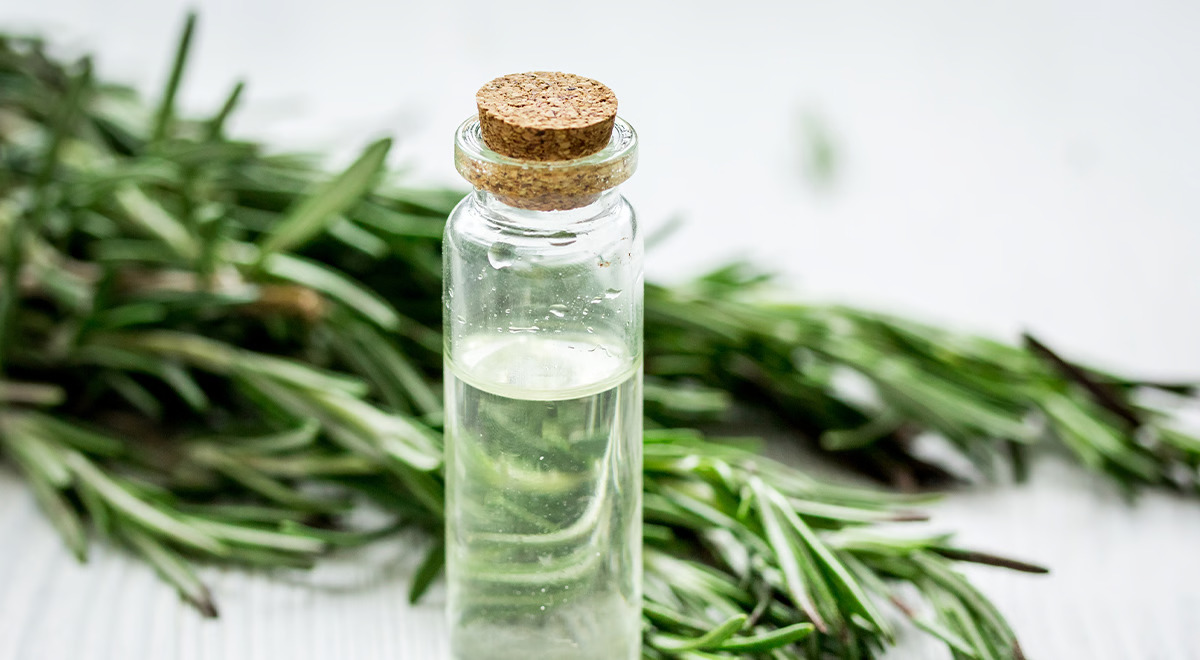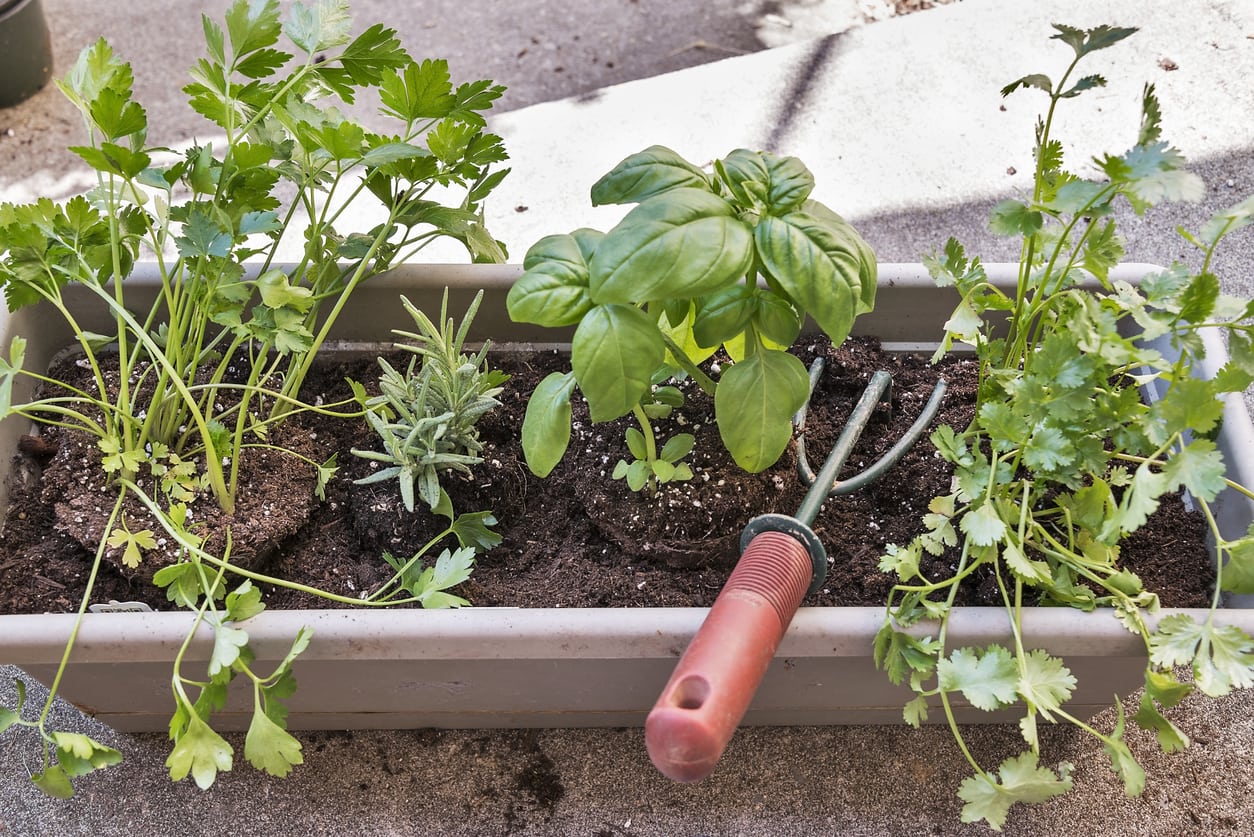Home>Types of Gardening>Edible Gardening>Why Plant Rosemary By Your Garden Gate


Edible Gardening
Why Plant Rosemary By Your Garden Gate
Modified: February 7, 2024
Enhance your edible gardening experience by planting rosemary by your garden gate. Discover the benefits of this versatile herb and elevate your homegrown meals.
(Many of the links in this article redirect to a specific reviewed product. Your purchase of these products through affiliate links helps to generate commission for Chicagolandgardening.com, at no extra cost. Learn more)
Table of Contents
Introduction
Welcome to the wonderful world of edible gardening! One of the most popular and versatile herbs to grow in your garden is rosemary. Known for its fragrant aroma and flavorful leaves, rosemary is not only a beautiful addition to any garden, but it also offers a myriad of culinary and health benefits.
Throughout history, rosemary has been cherished for its medicinal properties. It is believed to improve memory, boost mood, and stimulate digestion. In the kitchen, rosemary adds a delightful flavor to a wide range of dishes, including roasted vegetables, grilled meats, and even infused oils and vinegars.
Planting and caring for rosemary plants is relatively easy, making it an ideal choice for both novice and experienced gardeners. Once established, rosemary is a hardy perennial that will continue to thrive year after year with minimal maintenance.
In this article, we will delve into the various benefits of planting rosemary, provide you with step-by-step instructions on how to plant and care for your rosemary plants, and teach you how to harvest and use this aromatic herb to enhance your culinary creations. So roll up your sleeves, grab your gardening tools, and let’s dive into the wonderful world of rosemary gardening!
Benefits of Planting Rosemary
There are numerous benefits to planting rosemary in your garden that go beyond its delightful aroma and culinary uses. Let’s explore some of the key advantages of growing this versatile herb:
1. Flavorful Culinary Ingredient: Rosemary is a staple in Mediterranean cuisine and can elevate your dishes with its unique and savory flavor. Whether you’re seasoning roasted potatoes, marinating meats, or infusing oils, rosemary will add a distinctive taste to your culinary creations.
2. Packed with Nutrients: Rosemary is not only delicious but also a good source of vitamins and minerals. It contains antioxidants like rosmarinic acid, which can help reduce inflammation and protect against chronic diseases.
3. Medicinal Properties: Rosemary has been used for centuries in traditional medicine due to its various health benefits. It can improve digestion, boost the immune system, and even relieve headaches and muscle pain.
4. A Natural Pest Repellent: The strong fragrance of rosemary acts as a natural deterrent for pests such as mosquitoes, flies, and even some garden pests like aphids. By planting rosemary near your garden, you can help protect your other plants without the need for harmful chemicals.
5. Attractive and Drought-Tolerant: Rosemary plants are visually appealing with their needle-like leaves and delicate blue flowers. They are also incredibly resilient and can withstand dry conditions, making them an excellent choice for gardens in arid or water-restricted areas.
6. Low Maintenance: Once established, rosemary plants require minimal care. They are drought-tolerant and do well in well-drained soil. A sunny spot in your garden and occasional pruning to maintain shape is usually all that’s needed to keep your rosemary thriving.
7. Easy to Propagate: Rosemary is a relatively easy herb to propagate, making it simple to expand your herb garden. You can grow new plants from stem cuttings or layering, allowing you to share this wonderful herb with friends and family.
With these diverse benefits, it’s clear that planting rosemary in your garden is a wise choice. Not only will you have a flavorful and versatile herb at your fingertips, but you’ll also enjoy the added benefits of its nutrient content, medicinal properties, and pest-repellent nature. So, let’s move on to the next section and explore how to plant and care for rosemary in your garden.
How to Plant Rosemary
Growing rosemary in your garden is a relatively straightforward process. Follow these steps to ensure your rosemary plants thrive:
1. Selecting the Right Location: Choose a sunny spot in your garden with well-drained soil. Rosemary loves full sun and prefers soil that is slightly alkaline with a pH level between 6 and 7.
2. Preparing the Soil: Before planting, loosen the soil and remove any weeds or debris. If your soil is heavy or clay-based, add organic matter like compost to improve drainage.
3. Choosing the Right Rosemary Variety: There are different rosemary varieties available, such as ‘Tuscan Blue’, ‘Arp’, and ‘Prostrate’. Consider the growth habit and size of the plant to select the best fit for your garden.
4. Starting from Seeds or Seedlings: Rosemary can be grown from seeds, but it is easier and faster to start with seedlings. Purchase young plants from a reputable nursery or propagate your own from stem cuttings.
5. Planting the Rosemary: Dig a hole slightly larger than the root ball of your seedling. Place the plant in the hole, making sure the crown is level with the soil surface. Space multiple plants at least 2 to 3 feet apart to allow for proper air circulation.
6. Watering: After planting, water the rosemary thoroughly. Once established, rosemary is quite drought-tolerant and generally only needs watering when the top inch of soil feels dry.
7. Mulching: Apply a layer of organic mulch, such as straw or wood chips, around the base of the plant. Mulching helps retain moisture, control weeds, and regulate soil temperature.
8. Pruning: Regular pruning will help maintain a compact shape and encourage bushier growth. Prune after flowering by cutting back one-third of the plant’s height or as needed to prevent leggy growth.
9. Winter Protection: In colder regions, provide winter protection for your rosemary plants. Mulch around the base and consider covering the plant with a frost cloth during freezing temperatures.
By following these steps, you’ll be well on your way to successfully planting rosemary in your garden. Now let’s move on to the next section and learn how to care for your rosemary plants to ensure their long-term health and productivity.
Care and Maintenance of Rosemary Plants
Caring for your rosemary plants is relatively easy, but they do have specific needs to ensure their health and productivity. Follow these tips to keep your rosemary plants thriving:
1. Watering: Rosemary is drought-tolerant once established but still requires regular watering during the first year. Water deeply, allowing the soil to dry out slightly between watering sessions. Avoid overwatering, as rosemary is susceptible to root rot.
2. Sunlight: Rosemary thrives in full sun, so make sure your plants receive at least 6 to 8 hours of direct sunlight daily. Insufficient sunlight can lead to leggy growth and a decrease in essential oil production.
3. Soil Conditions: Rosemary prefers well-draining soil, as it is prone to root rot in waterlogged conditions. If your soil lacks drainage, consider planting rosemary in raised beds or containers filled with a sandy or loamy soil mix.
4. Fertilization: Rosemary is not a heavy feeder and generally does well with minimal fertilization. If your soil is poor or your plants show signs of nutrient deficiency, you can apply a balanced organic fertilizer in early spring.
5. Pruning: Regular pruning helps maintain the shape and vigor of your rosemary plants. Prune the plant lightly after flowering, removing any dead or damaged branches. Avoid pruning too heavily, as it may weaken the plant.
6. Pest and Disease Control: Rosemary is relatively resistant to most pests and diseases. However, keep an eye out for common issues like powdery mildew, aphids, or spider mites. If necessary, use organic pest control methods to mitigate these problems.
7. Winter Protection: In colder climates, rosemary may need some winter protection. Mulch around the base of the plant to insulate the roots and protect them from freezing temperatures. You can also cover the plant with a frost cloth during extreme cold spells.
8. Harvesting: You can start harvesting rosemary once the plants have reached a substantial size, usually after their first year. Snip off the young stems as needed, leaving the older branches intact for continued growth.
By following these care and maintenance tips, you can ensure that your rosemary plants remain healthy and productive for years to come. Now let’s move on to the next section and discover how to harvest and utilize the flavorful bounty of your rosemary plants.
Harvesting and Using Rosemary
Harvesting rosemary is an exciting and rewarding experience. The aromatic leaves can be used fresh, dried, or even infused in oils and vinegars. Here’s how to harvest and make the most of your rosemary:
1. Timing: Harvest rosemary when the plant is at least six to eight inches tall and has plenty of healthy foliage. It’s best to harvest in the morning when the essential oils are most concentrated.
2. Harvesting Method: Pinch or snip off the fresh, young growth of the plant. Avoid cutting back too much at once, as it can slow down the growth of the plant. Leave the older branches intact for continued growth.
3. Fresh Use: Fresh rosemary leaves are excellent for immediate use. Rinse the leaves under cool water and pat them dry. Strip the leaves from the woody stems and add them to your culinary creations.
4. Drying Rosemary: To dry rosemary, gather a small bunch of stems and tie them together with twine. Hang the bunch upside down in a warm, well-ventilated area away from direct sunlight. Once dry, remove the leaves from the stems and store in an airtight container.
5. Infusing Oils and Vinegars: Rosemary-infused oils and vinegars are a fantastic way to add flavor to your dishes. Place fresh rosemary sprigs in a clean, sterilized jar, and cover them with a high-quality oil or vinegar. Let the mixture sit for several weeks before using.
6. Culinary Uses: Rosemary is a versatile herb that pairs well with a variety of dishes. Use it to flavor roasted potatoes, grilled meats, pasta sauces, soups, and homemade bread. The possibilities are endless!
7. Home Remedies: In addition to its culinary uses, rosemary can be used in natural home remedies. Infuse rosemary leaves in hot water to make a soothing tea, or create a rosemary-infused oil for massages and hair care.
With its delightful aroma and culinary versatility, rosemary is truly a herb worth growing in your garden. Whether you prefer to use it fresh, dried, or in infused oils, you’ll enjoy the incredible flavor and benefits this herb has to offer. Now that you know how to harvest and use rosemary, it’s time to put your green thumb to work and enjoy the bountiful harvest from your rosemary plants.
Conclusion
Congratulations! You have now learned about the many benefits of planting and growing rosemary in your garden. Not only does rosemary add a delightful aroma and flavorful punch to your culinary creations, but it also offers medicinal properties, acts as a natural pest repellent, and requires minimal maintenance. With a sunny spot in your garden and well-drained soil, you can successfully grow and enjoy this versatile herb.
By following the steps outlined in this article, you have gained the knowledge to plant and care for rosemary plants. From selecting the right location and preparing the soil to choosing the right variety and properly watering your plants, you are equipped with the information to help your rosemary thrive. Remember to prune your plants regularly, be vigilant for any potential pests or diseases, and provide appropriate winter protection in colder climates.
Once your rosemary plants have matured, you can enjoy the rewards of your efforts. Harvest the fragrant leaves for immediate use, dry them for future culinary adventures, or infuse them in oils and vinegars for a burst of flavor. With rosemary in your garden, you have a versatile herb at your fingertips to elevate the taste of a wide range of dishes.
Not only is rosemary a culinary superstar, but it is also a beautiful and resilient addition to your garden. Its attractive needle-like leaves and delicate blue flowers add visual appeal to any garden landscape. Plus, its drought-tolerant nature and low maintenance requirements make it an excellent choice for both novice and experienced gardeners.
So why wait any longer? Start planning your rosemary garden today and enjoy the many benefits this versatile herb has to offer. From enhancing your culinary creations to providing health benefits, rosemary is truly a valuable addition to any edible garden. Happy gardening and happy cooking!










